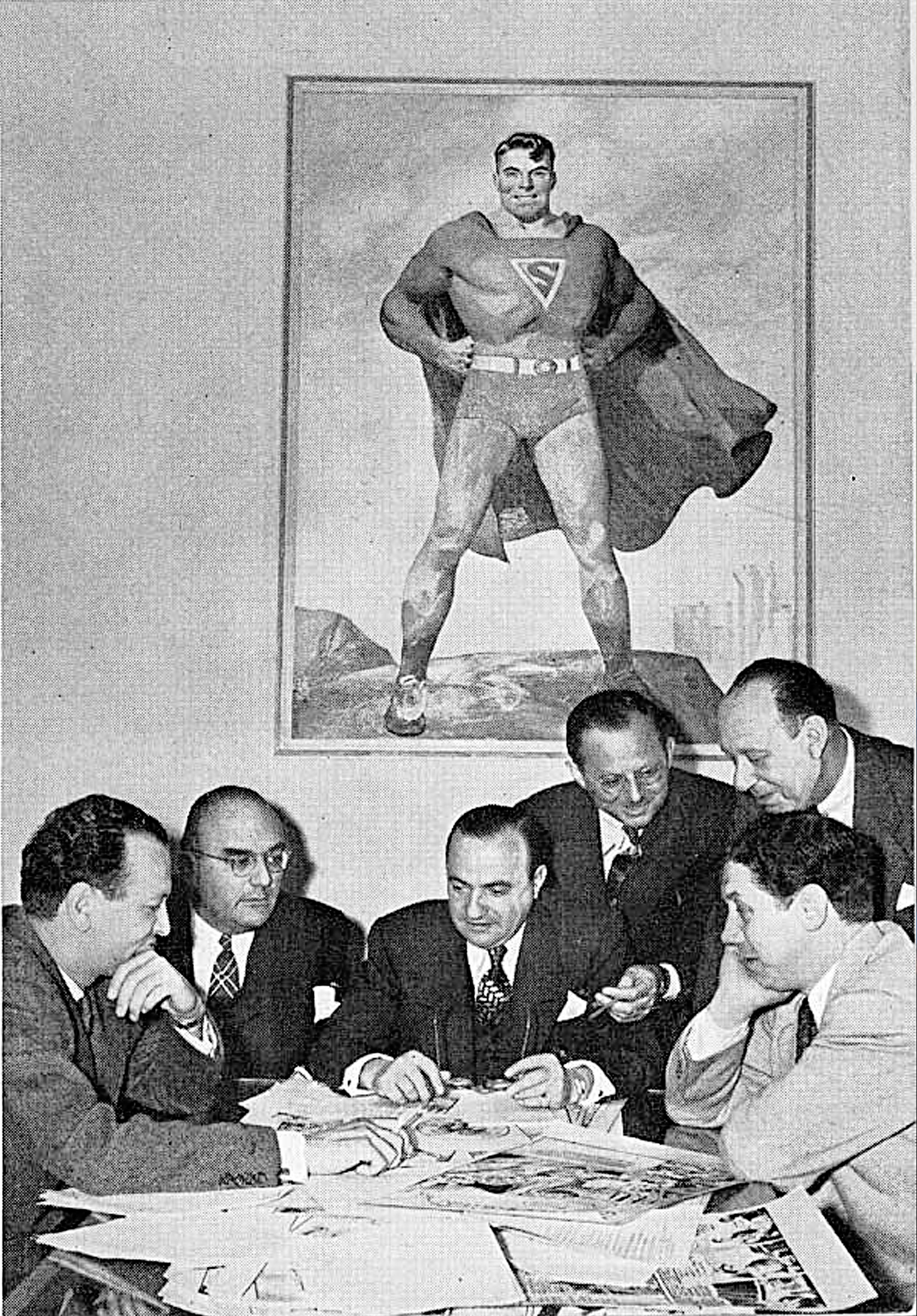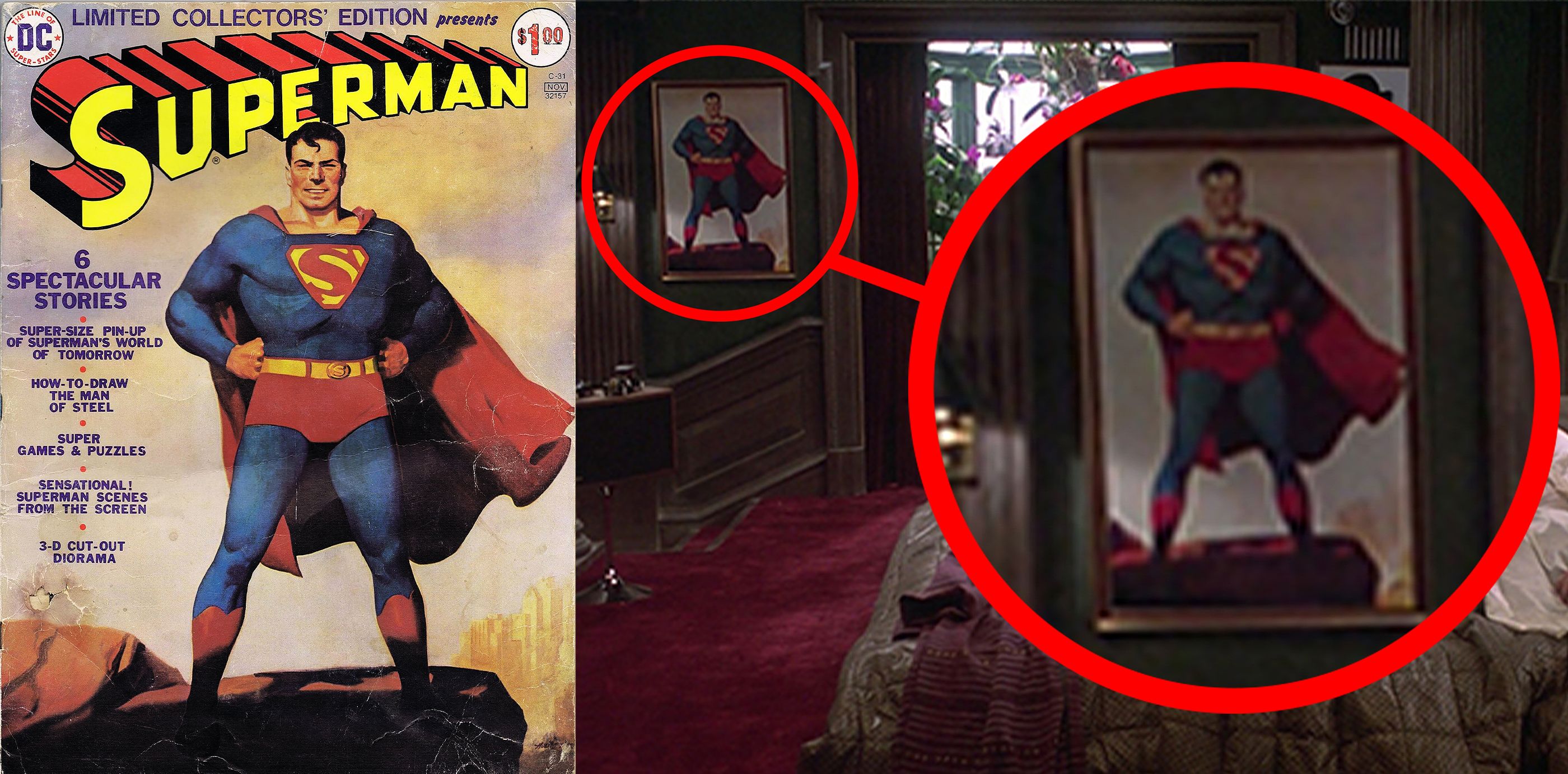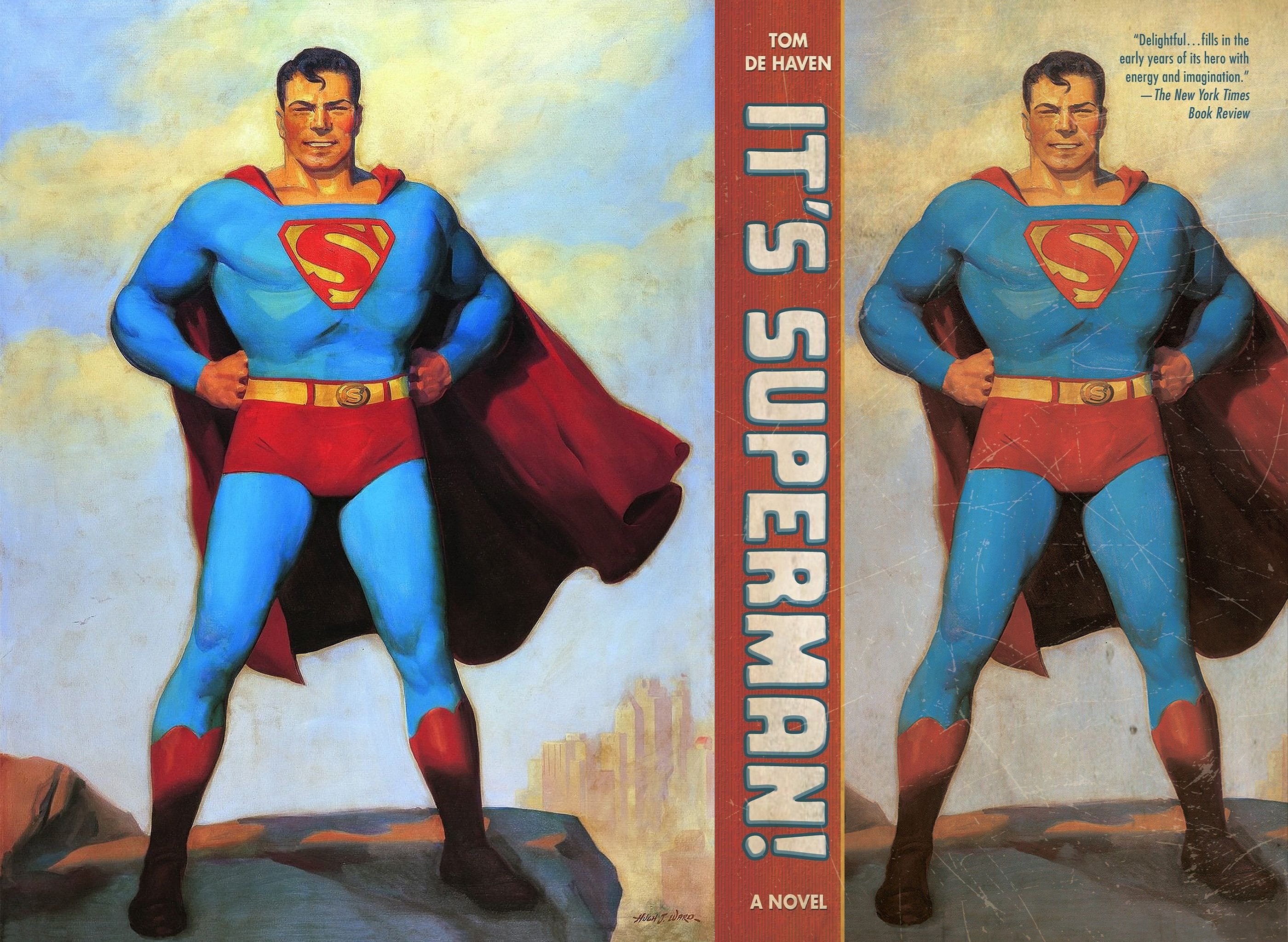The Man of Tomorrow, Superman was only beginning to taste his popularity in 1940 when The Golden Age of comics was in its infancy and DC Comics ruled the comic book landscape. Times were good for Superman's publisher National Allied Publications and its owner Harry Donenfeld due to the unprecedented and untapped success of the Man of Steel. Thanks to Superman, Donendeld and his partner Jack Liebowitz had access to millions of dollars in their most successful business venture yet. Donenfeld hired one of the star cover painters from his Pulp magazines to paint him a portrait of Superman to commemorate Superman's leap to radio, where it would become a staple in DC's offices for almost 20 years. After Donenfeld retired due to poor health in 1958, no one remembered seeing the painting again, and all that remained was a single amateur photograph.
The rights to Superman were purchased by Harry Donenfeld for National Allied Publication's new practice of printing original comics rather than just ones collecting newspaper strip reprints. After Superman made his Golden Age debut in 1938 with one of the most valuable comics of all time, Action Comics #1 written by Jerry Siegel and drawn by Joe Shuster, he quickly became the most asked-for character at the local newsstands. It would be a while before Superman was clearly defined, with his first few years involving a number of experiments involving his powers, his logo, and his look.
The first-ever Superman painting was by H.J. Ward, a celebrated pulp illustrator who had contributed several covers for magazines like "Spicy Detective Stories” and several others owned by Harry Donenfeld. When H.J. Ward was hired to paint Donenfeld's star character he had a lot of leeway in bringing Joe Shuster's drawings into a fully rendered painting, adding an air of intrigue to the piece due to its off-model look. Donenfeld commissioned the massive 60x45 inch painting from Ward for $100, and it was delivered to Donenfeld in June 1940, where he eagerly hung it behind his desk.
The Painting's Origin and Cover-Up
The painting was commissioned with the intention of using it to promote Superman's new radio show by creating photos of it to mail to radio listeners. Due to the painting's size, it was likely Donenfeld's real intention to have a painting of his most successful character by his favorite staff painter hanging in his office. The painting's first appearance was in a photo that was staged for a June 21st, 1941 Saturday Evening Post article, a year after the painting's creation, and the only known photo of the painting as it was painted by H.J. Ward.
Donenfeld eventually did decide to take photos with the painting to promote the Adventures of Superman radio show, but it was now 1942. While Superman was becoming a staple of many American households as a top-selling comic book, radio and animation star, DC was launching several lawsuits against other publishers for ripping off their star character. The biggest and most publicized lawsuit involved Captain Marvel and Fawcett Publications. Author David Saunders found a link between the lawsuits and the painting as he related in the biography H.J. Ward, saying:
“Joe Szokoli, another cover artist who routinely worked for Donenfeld’s spicy pulp magazines, was hired to alter the painting. Along with being a cover artist Szokoli also had a sideline as a graphic technician and retouch artist. For fifty bucks he painted the prescribed changes during a single visit to Donenfeld’s office, without spilling a single drop on the rug. The revised painting conformed to the detailed design elements that were stipulated in the copyright infringement lawsuit... Giving Ward’s painting a facelift not only eliminated conflicting evidence, it also extended the painting’s lifespan as Superman’s officially approved paradigm."
To better solidify their position in the suits they were launching, there was a need to bring uniformity to the look of Superman. The painting was changed due to an act of synergy and had the Saturday Evening Post photo never been taken, no one would have known of the original's existence. The touched-up version is markedly different with the biggest changes given to the face and logo, but it definitely looks more like the version of Superman's suit most fans know and love.
The Mystery of a Second Painting and a Missing One
Due to the size of the painting in the previous photographs which measured 60x45 inches, the reports of others seeing a much smaller painting of about 24x36 inches at DC's offices or in Warner Brothers' storage seemed odd to many. This would be another mystery Saunders would solve while researching H.J. Ward. Saunders saw Ward's painting of Superman reproduced in Les Daniels's Superman: The Complete History which led him to call DC to find the source of the photograph. As Saunders related in an article by James Barron in The New York Times:
"The image that existed was very low quality... I called DC and asked them and their archivist if they could help me find a high-quality original. They said the painting had been lost for over 50 years. The only thing that exists is an amateur color snapshot."
This snapshot was the one used to create the cover of the 1974 Superman Treasury which is what gave most fans their first look at a painted Superman decades before Alex Ross's Superman: Peace on Earth. The snapshot was used to produce anything involving the painting for over 30 years, including its appearance in the 1981 comedy Arthur, which is likely the smaller painting reported over the years, and possibly the one that hung in Jack Liebowitz's office for a time.
After verifying the second painting was indeed a print of an amateur photograph, Saunders immediately began trying to track down what happened to the original painting. It was widely known that the original hung in Donenfeld's office during his tenure, but given its disappearance after Donenfeld's retirement in 1958, Saunders logically decided to contact any living members of Donenfeld's family in hopes of tracking the painting down. After Saunders sent letters to anyone with the last name of Donenfeld he could find within the US, he heard back from Donenfeld's kin and discovered the painting was donated to the Leonard Lief Library at Lehman College in the Bronx, where it was hung unceremoniously until it was finally rediscovered in 2010.
The now-iconic painting of Superman has since been properly photographed and was used as the cover to the 2011 mass market paperback edition of It's Superman by Tom De Haven. For fans of the painting, a much closer look at the painting can be seen in the 2017 movie Professor Marston & The Wonder Women, where the original painting was used and is on display in a recreation of DC's offices. The rediscovery of this incredible piece of Golden Age comic history is a reminder of the treasures in the world that are waiting to be found, and its history is a unique look into how DC Comics was establishing Superman in his early years.
Sources: NYT: The Mystery of the Missing Man of Steel by James Barron, A Stanley Kaye Superman Painting Mystery by Todd Klein, Saturday Evening Post, H.J. Ward by David Saunders





